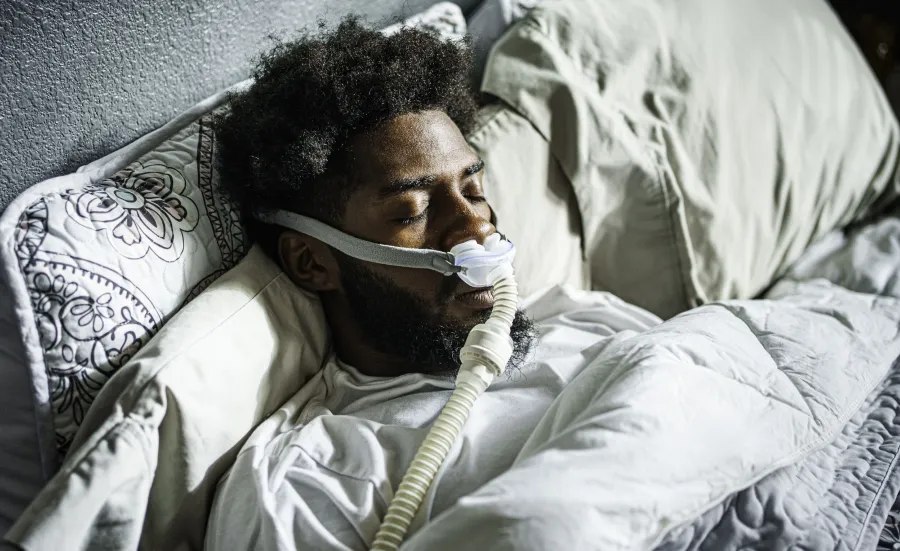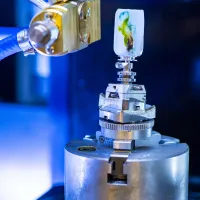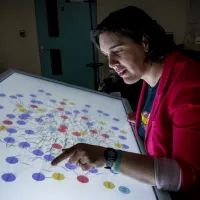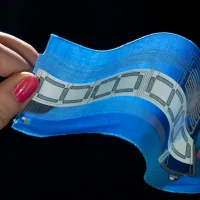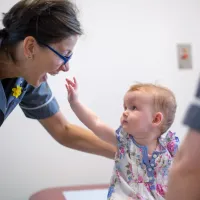Southampton scientists have been instrumental in developing a wearable ‘sticker’ that can accurately monitor and detect changes in people’s breathing – even when not in direct contact with the skin.
Changes in breathing rate can often be the first sign of patient deterioration in a number of diseases, including sepsis and COVID-19. The ‘groundbreaking’ device – thought to be the first of its kind – is designed to be used in healthcare settings and in the home to provide a crucial early warning for declining health that could save lives.
The benefits
“This wearable technology allows the measurement of respiratory rate over long periods of time, which is not achievable using conventional manual breath counting. Trends in respiratory rate can therefore be recorded and observed, offering the potential for rapid interventions that can potentially save lives,” says Professor Neil White , Director of the ECS Centre for Healthcare at the University of Southampton.
The work is led by the University of Southampton, University Hospital Southampton, Nottingham Trent University, with assistance from med-tech company Zelemiq Ltd, and is published in the journal Sensors .
The research has been made possible with almost £1m from the National Institute for Health Research (NIHR). It is being advanced within the NIHR Southampton Biomedical Research Centre .
Common chronic respiratory diseases, including asthma, sleep apnoea, and chronic obstructive pulmonary disease, currently affect more than 435 million people globally. As a result, there has been a push to develop methods for non-invasively and efficiently measuring respiratory rate with a medically acceptable accuracy.
How it works
The PneumoRator® contains a series of functional layers and works by measuring the frequency variation of the sensor caused by breathing, allowing for the accurate detection of subtle variations due to chest expansion or changes in lung composition.
As part of the study the device was capable of continuously measuring the respiratory rate of volunteers within an accuracy of two breaths per minute.
The researchers say the device is low-cost and mass manufacturable. It will now be further validated through a clinical trial at University Hospital Southampton with the aim of achieving regulatory approval within the NHS.
It would be wirelessly interfaced to display data onto a dedicated smartphone or tablet app for the healthcare team to use as an early warning system.
Currently breathing rate is measured in hospitals by nurses manually counting the number of breaths per minute – which the researchers argue can introduce delays to detecting changes and potential treatment.
While chest-band or facemask systems are available for continuously measuring respiration rate, these can be invasive and uncomfortable for use over long periods of time.
Dr Harry Akerman, a consultant anaesthetist at University Hospital Southampton, says: “Respiratory rate is often the first physiological parameter to change as a patient is becoming unwell - ahead of changes to heart rate, blood pressure, temperature, and oxygen levels. It is also the only one of these that is routinely measured manually and so is susceptible to human error,” says Dr Harry Akerman, a consultant anaesthetist at University Hospital Southampton.
We know that earlier detection of diseases is better for patients whilst also being cheaper to treat, so a device that continuously and non-invasively measures respiratory rate could be a great tool in the early detection of deteriorating patients”
Dr Yang Wei, Nottingham Trent University’s Medical Technologies Innovation Facility
“The ability to continuously measure respiration in this way gives us the potential to enable faster, more effective treatment, significantly enhancing patient outcomes and operational efficiency within the health service,” continues Dr Yang Wei, an expert in electronic textiles and electronic engineering in Nottingham Trent University’s Medical Technologies Innovation Facility.
